
 Flash News
Flash News

There's nothing more common than sneezing, so we don't pay much attention to it when it happens to us. It's only when its frequency increases throughout the day that we wonder if there's really something wrong with us.
Why do we sneeze?
The simplest explanation is that our body's automatic, involuntary reaction occurs when our nose detects something that bothers it (e.g. an allergen) and will immediately try to get it out. However, there are other reasons why this happens.
"Sneezing is one of our body's most common responses, yet we often don't take the time to think about how and why it happens," explains Tim Mynes, an emergency physician from Virginia, adding that "it's essentially an involuntary release of air that helps the body remove irritants, such as allergens, odors, and dust, from the nose and throat."
Of course, as the doctor says, this activity will be strongly noticeable when we are faced with something that causes us allergies or a cold.
At the same time, in addition to dust, soot, nasal sprays and sudden exposure to light, a trauma to the nose and inhalation of cold air can lead to sneezing. “We can sneeze when we inhale cold air because the nasal mucosa will dry out and crack, causing the same reaction to the nerves in the nose as dust,” says the doctor.
In fact, according to a 2019 study published in Scientific Reports, it was observed that sneezing triggered by bright light, which is known as reflex sneezing, is an inherited trait. More specifically, in the research sample of more than 3,400 people in China, a link between reflex sneezing and a specific gene was identified.
What exactly happens when we sneeze?
Although it may seem like we are causing the sneeze, in reality our body goes through several steps until it reaches this reaction.
As Dilraj Kalsi, a doctor and founder of a medical center in London, says, “the sneeze reflex begins with irritation of the nasal mucosa, as sensed by the cilia of these cells. These receptors send signals via the trigeminal sensory nerves to the sneeze center in the lateral spinal cord.”
Then, as Dr. Kalsi points out, two different nerve signals are activated, one in the muscles of the pharynx, larynx, and respiratory system, causing sneezing, while the other, through the parasympathetic nerves, increases nasal secretion and tears.
On the other hand, just before a sneeze, the body prepares itself as the chest muscles compress the lungs while the vocal cords close, says Dr. Mynes.
"When the vocal cords reopen, air is forced into the airways and through the nose at high speed. The eyes close and the diaphragm moves upward as the chest muscles contract, releasing air from the lungs," the doctor explains.
These droplets released from the nose and mouth are the allergens that have been exhaled, however they can contain viruses and germs, spreading them to other people. This is why scientists remind us that when we sneeze, we should cover our mouth and nose by sneezing into the inside of our elbow or into a tissue. If this is not possible, we should put our hand in front of it and immediately wash it thoroughly.
Latest news


Not only the body, swimming also helps the brain
2025-07-05 21:02:49
"Be careful with the water", Alimehmeti warns about the health risks of summer
2025-07-05 20:39:10
PSG beats Bayern Munich 2-0, advances to Club World Cup semifinals
2025-07-05 20:19:38

Two vehicles collide on the Elbasan-Peqin axis, drivers injured
2025-07-05 19:26:29

What does Zelenskyy have more than Zegjineja?
2025-07-05 18:45:26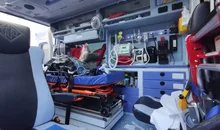

Fiscal peace, but at a cost
2025-07-05 18:00:10
'Bankers' tax evasion, Chinese CEO and former director jailed
2025-07-05 17:39:21
Kyle Walker joins English club on two-year deal
2025-07-05 17:20:24
Two cars collide on the Saranda-Delvina axis, 4 injured
2025-07-05 17:05:29
Touching gesture! Liverpool will pay Jota's family's salary until 2027
2025-07-05 16:45:18
The zodiac signs that cheat most often
2025-07-05 16:25:53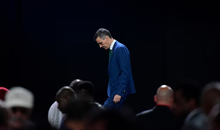

"I asked for the dismissals", Dredha tries to soften Rama's 'blow' in Vlora
2025-07-05 15:48:49
Bomb threat in Parliament, prosecutor: It was a lie
2025-07-05 15:22:28

Bardhi: The recount revealed how greedy Zeqine Balluku is in stealing
2025-07-05 14:44:29
Knife wound on the secondary road Tirana-Durrës, perpetrator sought
2025-07-05 14:37:54
Tears and pain, Diogo Jota is escorted to his final home
2025-07-05 14:21:34
Success starts with yourself! Simple ways to invest in personal development
2025-07-05 13:58:50
Unlicensed firearms found in apartment, 50-year-old arrested in Lushnje
2025-07-05 13:43:11

Tirana Court remands Skerdi Sina to prison
2025-07-05 12:59:34
Cocaine laboratory in Greece, here are the Albanians arrested and wanted
2025-07-05 12:40:16
Directed Justice/Vangjeli: SPAK does not investigate any scandal involving Rama
2025-07-05 12:22:03

Bomb alert, Police remove MPs and media from Kosovo Parliament building
2025-07-05 11:48:16
"The will of the people" and the irony of ordered resignations
2025-07-05 11:32:05
Summer drowning risk: How to enjoy the water without risking your life
2025-07-05 11:20:27
Fire situation in the country, 16 fires reported in 24 hours, 4 still active
2025-07-05 11:07:04
Car hits pedestrian at white lines, injured in serious condition in Vlora
2025-07-05 10:59:58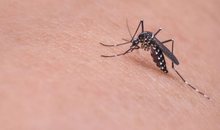
Mosquito-borne diseases are a growing problem in Europe
2025-07-05 10:44:13



One of Sweden's most dangerous and wanted criminals arrested in Turkey
2025-07-05 09:38:29
Foreign exchange/ How much foreign currencies are bought and sold today
2025-07-05 09:18:38

"Don't be influenced by the opinions of others", today's horoscope
2025-07-05 08:40:50

Morning Post/ In 2 lines: What mattered yesterday in Albania
2025-07-05 08:02:07

Trump says he's ready to raise tariffs to 70% on some countries
2025-07-04 22:35:52
Tre shenjat e zodiakut që do ‘pasurohen’ në Korrik
2025-07-04 22:05:09
Gaza War: Hamas Accepts US Proposal for 60-Day Ceasefire
2025-07-04 21:50:10
Autocracy in Albania, Fuga: Governance has gotten out of control
2025-07-04 21:40:51
Meta: Agriculture on credit, the new fraud!
2025-07-04 21:26:39
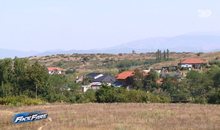



Vote recount in Durrës ends without changes
2025-07-04 20:12:54
Gas station explodes in Rome, 25 injured (VIDEO)
2025-07-04 20:00:20

These afternoon habits often sabotage weight loss
2025-07-04 19:39:28
Former Arsenal player Thomas Partey accused of rape
2025-07-04 19:24:21
Shepherd disappears without a trace in Delvina
2025-07-04 19:14:31

Bardho gave Zegjine's mandate/Braho: Unfair! It violates the electoral system
2025-07-04 19:01:08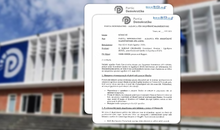


Rapid developments in the Sultanates!
2025-07-04 18:00:06



Italy tightens rules for skateboard traffic
2025-07-04 17:20:18

Unusual for the time, dense fog covers the coast of Vlora
2025-07-04 16:48:01


Accident on the Shkodra-Lezhë axis, one dead and 3 injured
2025-07-04 16:14:19
Albania with fewer requests for asylum and Albanian citizenship in 2024
2025-07-04 16:06:57

Albania last for quality of life, DP: Technical government is the solution!
2025-07-04 15:42:30
Nico Williams says "No" to Barcelona, signs with Athletic Club until 2035
2025-07-04 15:33:35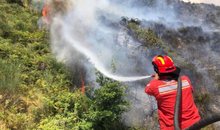
Fires in the country, four fires are still active, what is the situation?
2025-07-04 15:24:20

Summer brings big changes for these 4 zodiac signs
2025-07-04 15:00:04
Osmani: MPs need to agree to a secret ballot for the Speaker of Parliament
2025-07-04 14:51:09
Serious accident on the Peqin-Elbasan axis, two injured
2025-07-04 14:37:56

GJKKO leaves in force the security measure for the head of the KPP
2025-07-04 13:58:17
Who will replace Ilir Meta and take over the leadership of the PL?
2025-07-04 13:50:36
Berisha: Dismissal of directors in Vlora, another act of 'scapegoats'
2025-07-04 13:41:46




Librazhd/ In a serious psychological state, the young man consumes pesticides
2025-07-04 13:05:07


Weapons trafficked from Kosovo to Albania, two arrested, 8 pistols seized
2025-07-04 12:33:28
Konsumimi i tepërt i çokollatës, ja cilat janë dëmet që shkakton në organizëm
2025-07-04 12:23:35
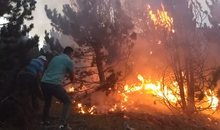
Fires in the country, 21 fires in the last 24 hours, 4 still active
2025-07-04 12:00:19
WB calls for debt transparency: Albania to publish details of every loan
2025-07-04 11:50:05
